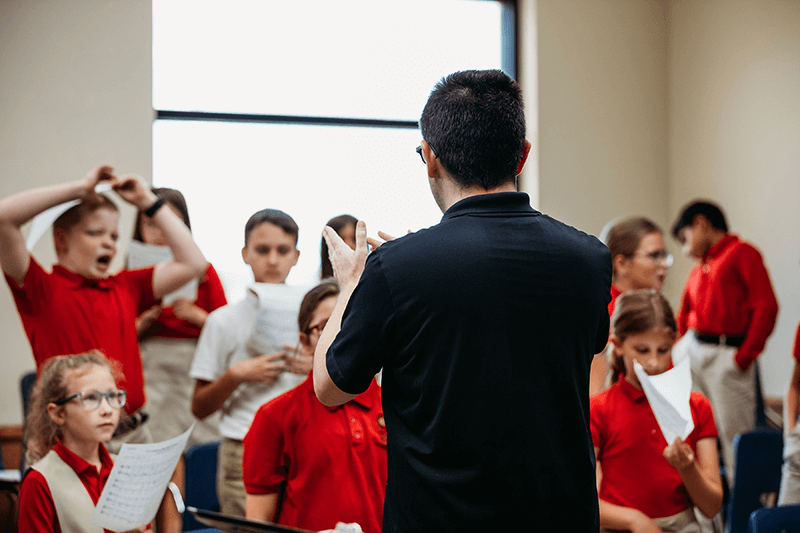
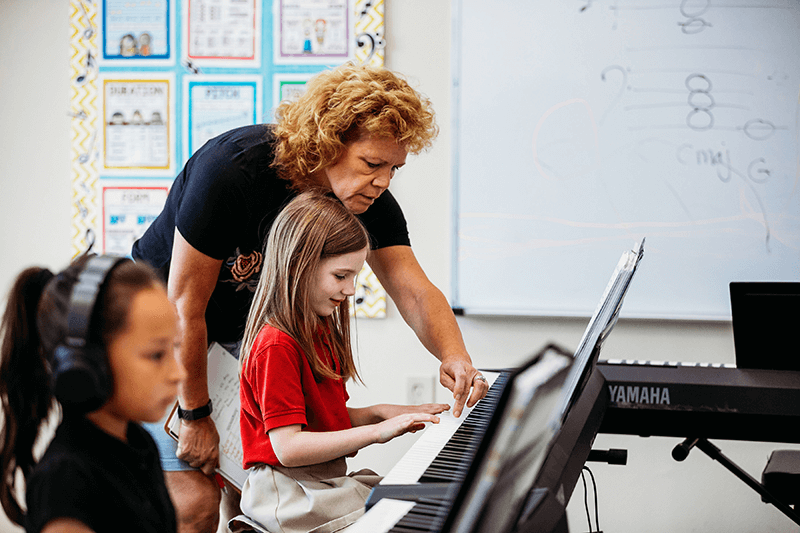
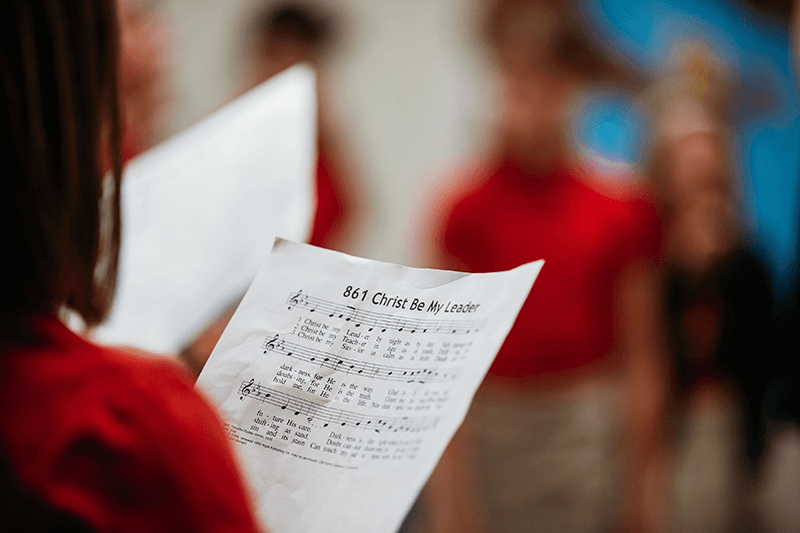
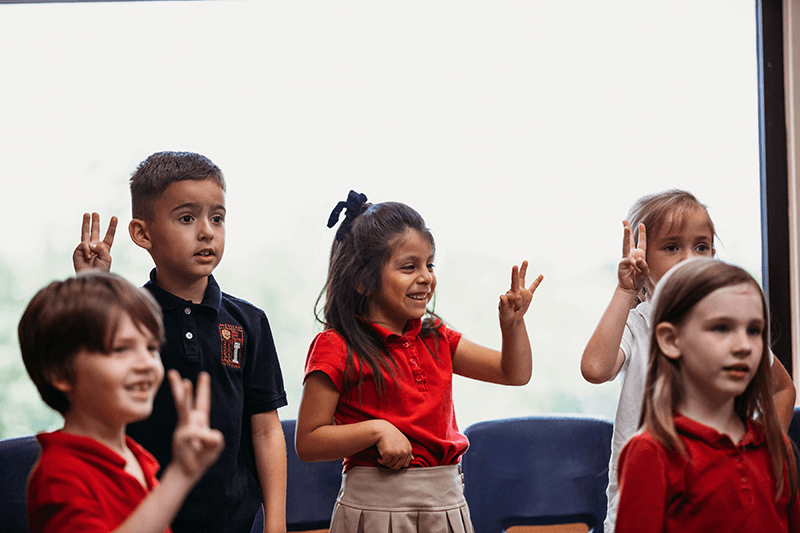
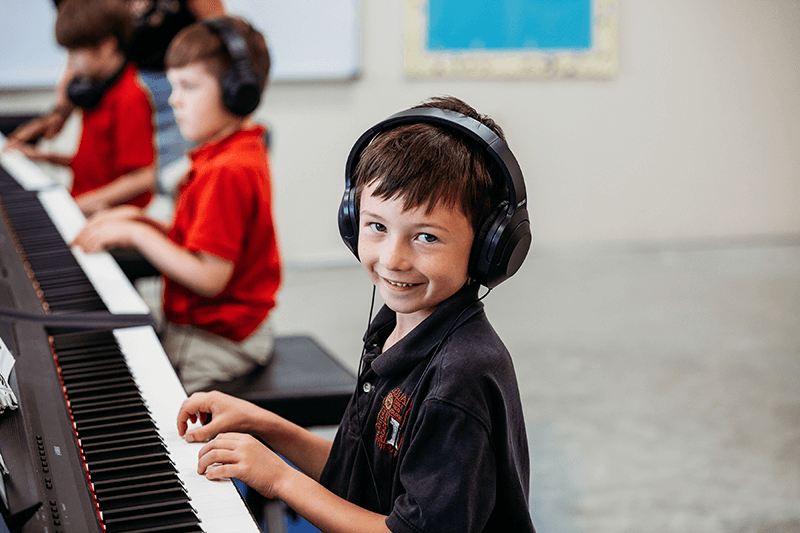
All our students are taught the elements of music beginning in preschool and kindergarten. Piano is added in first grade and strings in fifth grade. Our students are also instructed in vocal music starting in kindergarten.
Choir
From Kindergarten into the eighth grade, our students enjoy learning and performing as a choir. They perform at school functions, in chapel, and occasionally take part in the worship services of Messiah Lutheran Church.
Strings
Group strings instruction begins in 6th grade. Students further their study of music theory and then progress by learning to play pieces that are appropriate for their level of ability. The small groups meet once a week with our instructor from Da Capo Music, and are expected to practice what they have learned at home.
The Importance Of Music Education
All Messiah Lutheran Classical Academy students, participate daily in music’s highest role as a vehicle for God’s Word. The most important thing music can teach is faith. For this reason, the Lutheran Church has a rich musical heritage that reflects our forefathers’ awareness of the important connection between Word and song. We have hymns and liturgy that present the Gospel uniquely and beautifully.
In addition to its spiritual significance, music also trains the mind. The ability to make music demands thinking in action, which is developed through studying musical performance. The study of music improves cognitive development and helps children perform better in other subjects. Recent studies have also shown a connection between musicians and above-average test scores.
Appreciating music helps children make educated decisions about their music choices. Music surrounds us everywhere, from the grocery store to the concert hall. Music education helps children decide what music is valuable to them.
Music deserves a place in our curriculum based on its own merits, but it also acts as a teaching tool for other aspects of our curriculum and life. Many of us learned the alphabet through song, which is a highly effective means of fact memorization within the classical model of education. Childhood songs are rarely forgotten, making them the perfect medium for presenting the grammar of different subjects.
Finally, music is simply enjoyable. It has always been used in social settings as a form of entertainment. Through music, friendships are built, families are united, and countries are identified.
We are pleased to offer the students of Messiah Lutheran Classical Academy the opportunity to read music, play piano and strings, sing the songs of our country and church, and enjoy each other’s company through musical activity while strengthening their faith in the process.
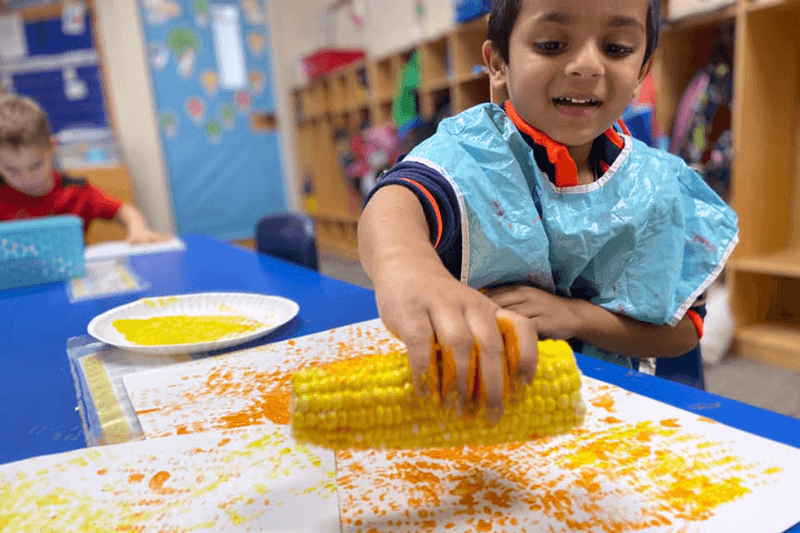
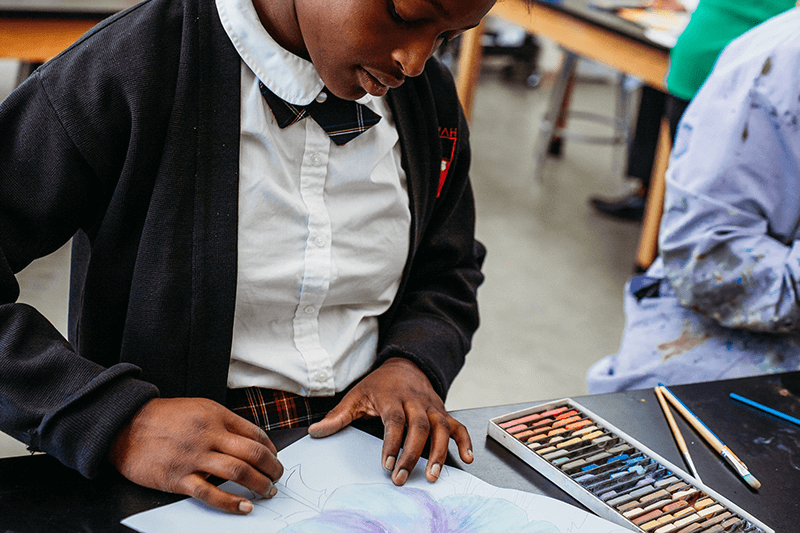

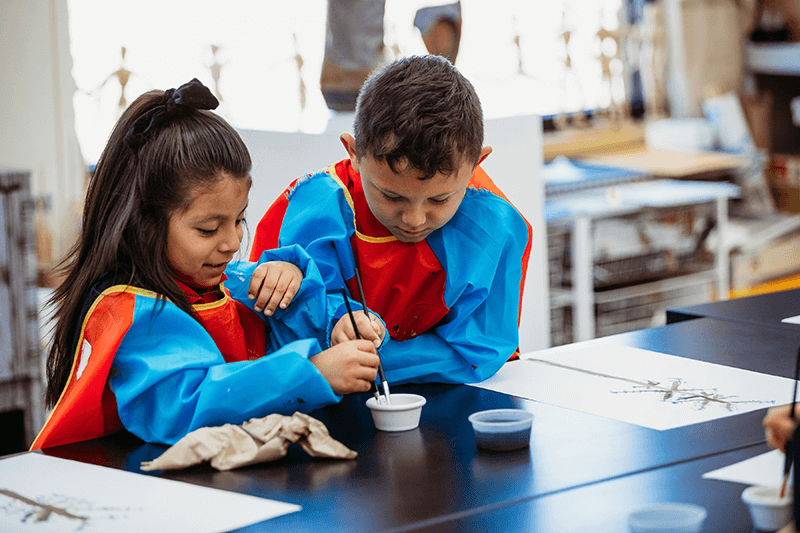
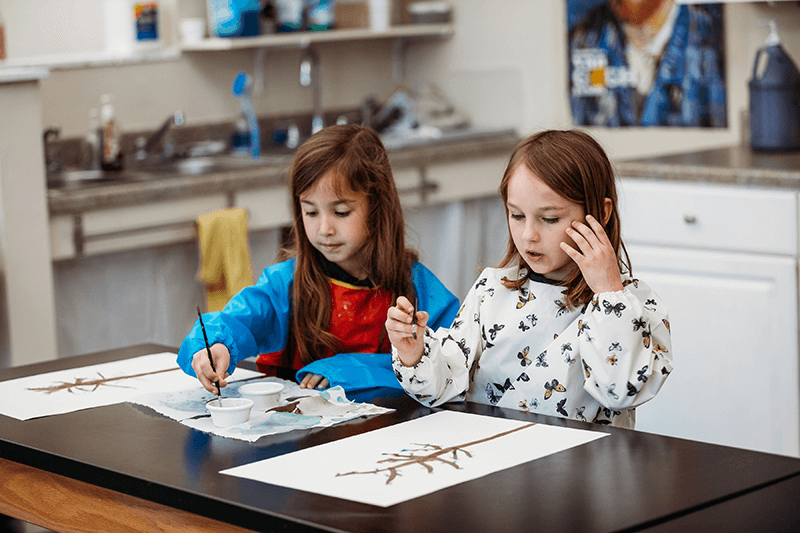
Grammar
Grammar students participate in an experiential study of the elements of art (line, shape, color, form, texture), drawing (pencil and charcoal), and beginning painting. Sample projects include clay modeling, illuminations, mosaics, fresco painting, paper mache, Grecian urns, medieval illustrations, one and two-point perspective, and still-life drawings.
Piano
Group piano instruction begins in first grade and continues through fourth grade. Students first learn music theory and then progress by learning to play songs that are appropriate for their level of ability. The small groups meet once a week and are expected to practice what they have learned at home. Students will showcase what they have learned in a Piano Recital in the spring.
Logic
Seventh-grade logic students are enrolled in an Introduction to Art class. In the fall semester, each element of art is dealt with individually and more exhaustively than in the grammar stage. The projects become more challenging and require more thought and advanced planning. In eighth grade, the first semester is spent working on a similar course of study centered on design principles and culminating in creating a mobile that deliberately utilizes all of the elements and principles in a three-dimensional project.
The spring semester in the School of Logic art classes explores the periods of art corresponding with the periods of history being studied. The students will be given a variety of projects designed to teach new art skills, reinforce the art history lessons, and exercise the student’s creativity.
Art History
Art history and appreciation are woven through the art curriculum, beginning in Kindergarten. Most new projects start with slides of famous and not-so-famous works from past masters. Beginning in the second grade, the slides work in conjunction with each class’ history period. By the end of sixth grade, students are familiar with the major art movements from Gothic to Impressionism and have studied at least 30 different works from those periods. The study of the great Masters and art movements continues through our School of Logic.
The Importance of Visual Arts Education
Art at Messiah Lutheran Classical Academy is an integral part of the curriculum. It is designed to teach the fundamentals of classical drawing and the elements of art (line, shape, color, form, texture) and to be part of the whole cloth of the history curriculum. The students are exposed to artworks and artifacts from the period of history they are studying, and the works they create are often created in the style of that time. This gives them a greater appreciation for the artifacts, the people who made them and provides a more well-rounded view of the period under study.
Through art, students are better able to understand the ideal and ideas of those who have gone before. As they progress through the years, they absorb bits and pieces of art history and style and learn past cultures’ great ideas and thoughts through history and literature. In time, each student develops their own style and way of communicating their ideas to today’s world.
A Ministry of Messiah Lutheran Church
Providing private classical education with a Christian worldview for
Keller & the surrounding area.
1308 Whitley Road, Keller, TX 76248